Kamchatka crab: lifestyle of the northern giant (10 photos)
The Kamchatka crab is, in fact, not a crab, but a species of crab-like hermit crab, which is highly valued by people. I suggest you learn more about these animals. 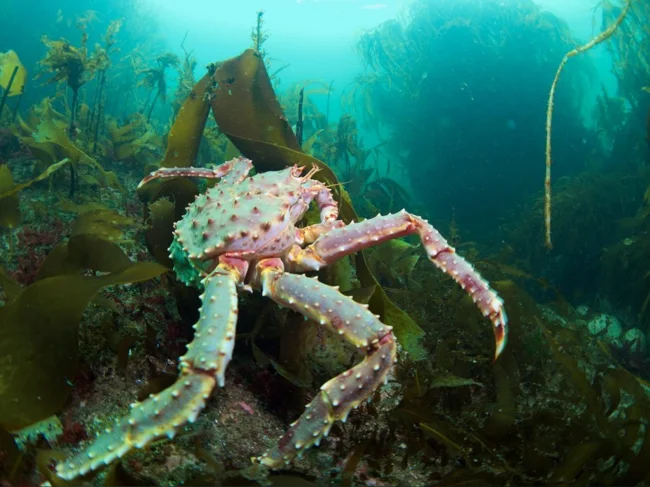
If we take the phrase “you are what you eat” too literally, then we should all be eating more king crab meat. And then we will get magnificent shells, the ability to eat anything and become the favorites of millions!
But here’s the paradox: if we become Kamchatka crabs, we will definitely not become crabs. After all, Kamchatka crabs are crayfish. Yes, their cephalothorax is rounded, and not elongated, like that of crayfish. Yes, the small belly is not at all like the gorgeous tail of crayfish. And yet our hero has no family ties with real crabs. Simply a similar way of life led to the same evolutionary decisions.
Like normal crabs, Kamchatka crabs slowly crawl along the bottom in search of food. And these animals can eat everything that is not nailed down. Young arthropods feed on algae, sea worms and eggs. Older animals also have larger prey: from sea urchins to small fish. And, of course, they all love carrion. She can't resist! 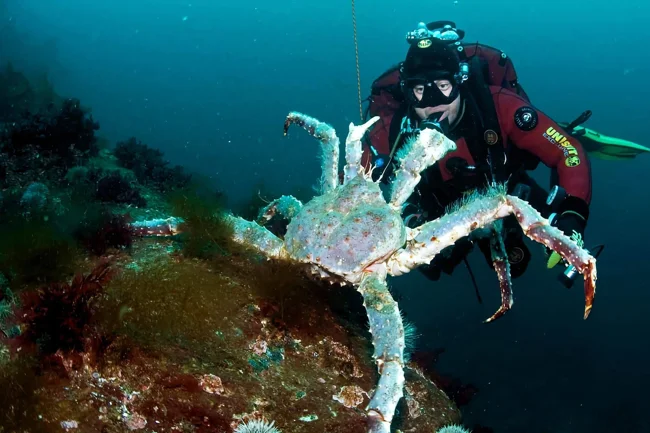
However, resisting crab attacks is not an easy task. Their powerful claws easily cut fishing nets. And the spiked shell makes up 40% of the total mass of the animal. Even the dimensions of the pseudocrab play to its advantage: the largest representatives weigh up to 13 kilos, and the span of their paws reaches 180 centimeters! Bivalve mollusks and starfish do not have a chance to defeat such a colossus. 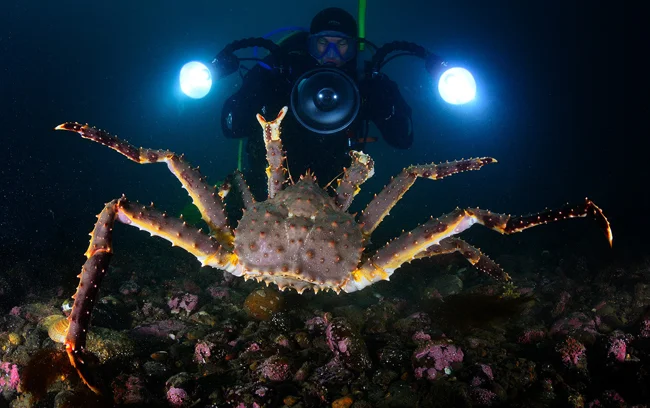
The hepatopancreas helps digest everything that the Kamchatka crab has dragged into its insatiable mouth. This is a gland that performs the functions of the liver and pancreas. It is huge: about 10% of the body's weight, and it produces a wide variety of enzymes. 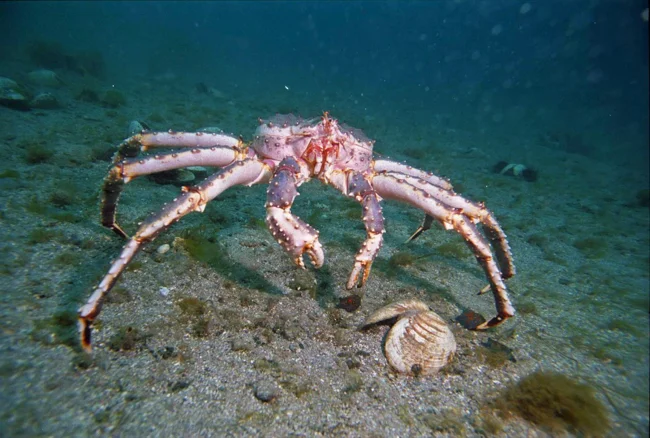
I think there is no need to explain that strong and tenacious creatures feel great even in the harsh northern waters of the Pacific Ocean. But they also have opponents: young people are vulnerable to large predatory fish, sea otters and octopuses. But this is good: thanks to the crabeaters, the system is maintained in balance, and most arthropods die before they become too strong. 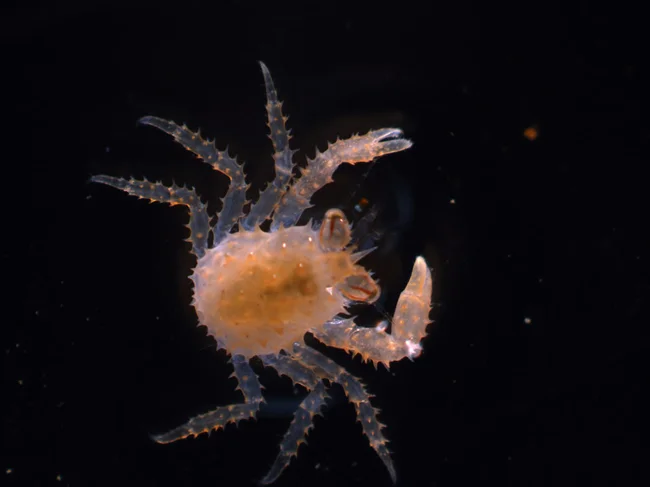
But in the Barents Sea they have practically no enemies. In the 1960s, Soviet scientists brought several hundred crabs to the shores of Murmansk. Although not immediately, they were able to adapt to local conditions. And this event can be looked at from two sides. 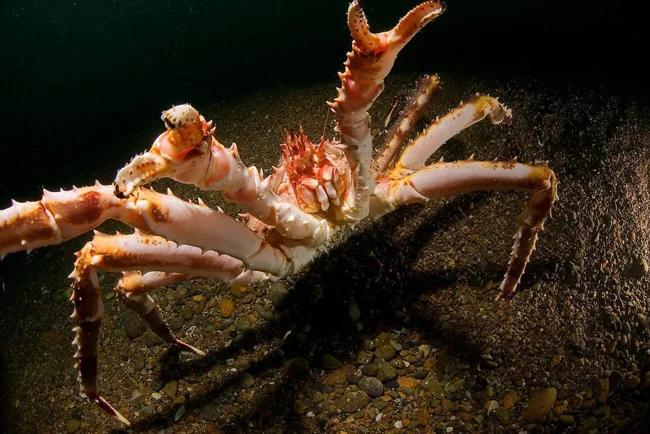
On the one hand, the crabs turned out to be a terribly unpleasant introduced species. They easily turn the seabed into a wasteland and undermine the number of fish by eating their eggs. In addition, the territories they occupy are constantly expanding: in 1977, crabs reached Norway. And in 2022 they were caught by British fishermen. 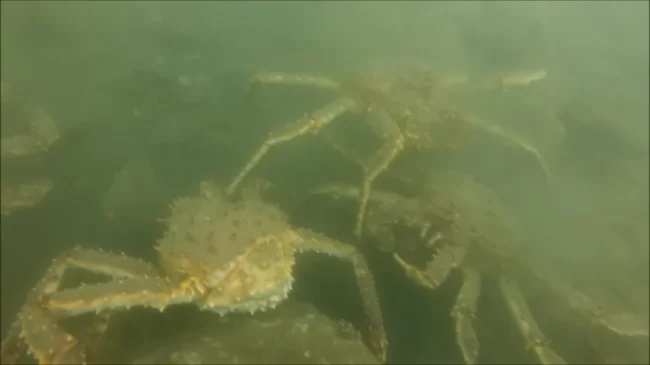
Shortly before spawning, the crabs begin to cluster together. It looks creepy.
On the other hand, Norway today produces tens of thousands of tons of crab meat annually. Both states even entered into an agreement, the main task of which is the rational use of a valuable resource. Each year, a joint commission determines exactly how many crabs countries can catch to prevent overfishing or overspread. 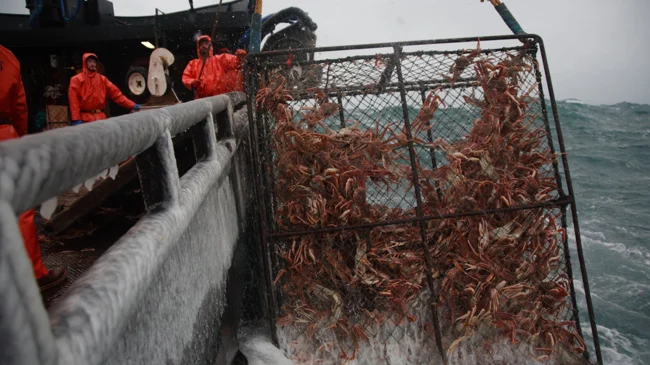
Despite the fishing restrictions, they manage to catch a lot of crabs.
This is not surprising, because crab meat is a tasty and healthy delicacy. Like other marine animals, it is rich in useful salts and trace elements. In addition, it is not inferior in protein content to beef, but contains 2 times less calories. In general, it’s a nutritionist’s delight. 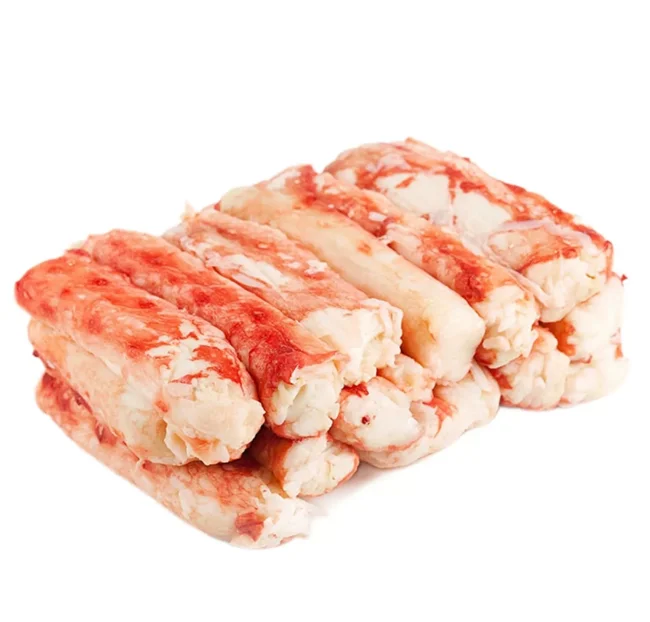
But tasty meat is not the only thing that can be obtained from the carcass of a delicious animal. Remember about hepatopancreas? That thing that helps the crab digest all sorts of crap? So, almost half of it consists of high-quality fat, which does not require purification, because it completely lacks substances toxic to humans. 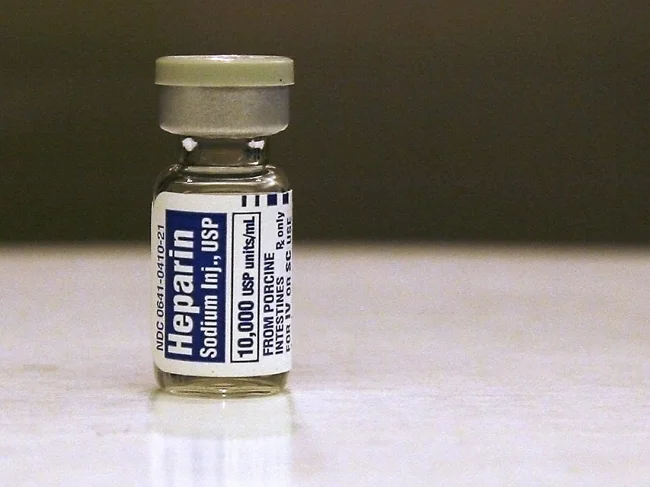
To be fair, most heparin comes from pigs, not crabs.
And the second half of the organ is stuffed with enzymes and biological substances that are actively used in medicine and biology. For example, heparin, extracted from crabs, is used for the non-invasive treatment of thrombosis and thromboembolism.
